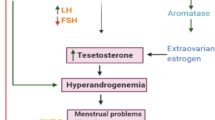Abstract
Cervical cancer (CaCx) is a global public health problem as it is the second most common cancer leading to the death of women worldwide. Many references revealed that the low levels of antioxidants induce the generation of free radicals leading to DNA damage and further mutations. In the present study attempt have been made to evaluate the levels of serum Lipid peroxide, Nitric Oxide (NO.) Erythrocytic—Superoxide Dismutase (RBC-SOD), Vitamin-C, serum Copper (Cu) and serum Zinc (Zn). 120 patients were divided in 4 groups according to the increasing CaCx stages i.e. stage I, II, III & IV respectively. All the patients were around the age group of 25–65 years. 30 healthy women between the same age group were treated as controls. Highly significant increased values of MDA, NO. and Cu were observed (p<0.001) whereas the activity of RBC-SOD, levels of Vitamin-C and Zn were significantly decreased in CaCx patients as compared with healthy controls (p<0.001). Cu/Zn ratio was found to be altered in CaCx patients. From our findings it can be concluded that the oxidative stress is induced among CaCx patients, which inturn increases the risk of CaCx.
Similar content being viewed by others
References
Gajalakshmi CK, Krishnamurthy S, Shanta V. Cervical cancer screening in Tamilnadu, India: a feasibility study of training the village health nurse. Cancer, Causes, Control 1996; Vol. 7: 520–24.
Notani PN. Global variation in cancer incidence and mortality. Current Science 2001; Vol. 81: 465–74.
Chiou IF, Hu ML. Elevated lipid peroxidation and disturbed antioxidant enzyme activities in plasma and erythrocytes of patients with uterine cervicitis and myoma. Clin Biochem 1999; Vol. 32: 189–92.
Beevi SS, Rasheed MH, Geeha A. Evidence of oxidative and Nitrosative stress in patients with Cervical squamous cell carcinoma. Clin Chim Acta 2007; 375(1–2): 119–23.
Ioannidis I, Batz M, Paul T, Korth HG, Sustmann R, Groot H. Enhanced release of nitric oxide causes increased cytotoxicity of s-nitro-N-acetyl-DL-penicillamine and sodium nitroprusside under hypoxic condition. Biochem J 1998; Vol. 318: 789–95.
Yamanaka N, Fukishima M, Koizami K, Nishida K, Kato T, Ota K. Enhancement of DNA chain breakage by bleomycin and biological free radicals producing system. Oxygen Biomembranes (New York) North Holland 1998: 56–69.
Manoharan S, Klanjiappan K, Kayalvizi M. Enhanced Lipid peroxidation and impaired enzymatic antioxidant activities in the erythrocytes of the patients with cervical carcinoma. Cell Mol Bio Lett 2004; 9(4A): 699–07.
Niki E. Action of ascorbic acid as a scavenger of active stable oxygen radical. Am J Clin Nutr 1991; Vol. 54 (11): 195–45.
Koechlin A. Ascorbic acid in the prevention and treatment of cancer. Alternative Medicine Review, 1998; Vol. 3(3): 174–86.
Zorodestsky, Z Fuks, A Sulkes, H Ginsburg, Z Weshler. Correlation of erythrocyte and plasma levels of zinc, copper and iron with evidence of metastatic spread in cancer patients. Cancer 1985; Vol. 55: 779–87.
Morton K, Schwartz. Role of trace elements in cancer. Cancer Research Nov. 1975; Vol. 35: 3481–87.
Kei Satoh. Serum lipid peroxide in cerebrovascular disorders determined by a new colorimetric method. Clin Chim Acta 1978; Vol. 90: 37–43.
Najwa K Cortas, Nabil W Wakid. Determination of inorganic nitrate in serum and urine by kinetic cadmium reduction method. Clin Chem 1990; Vol. 36(8): 1440–43.
Christine C Winterbourn, Rosemary Hawkins, Maureen Brain, RW Carrell. The estimation of red cell superoxide dismutase activity. J Lab Clin Med Fed. 1975; Vol. 89: 337–41.
Aye Kyaw. A simple colorimetric method for ascorbic acid determination in blood plasma. Clin Chim Acta 1978; Vol. 86: 153–7.
Wagner G, Lubin, Ye Chin. Oxidative damage to red cells in cellular antioxidant defence mechanism. CRC Press: Bacon Raton, 1998: 333–5.
S Perwez Hussain, Lome Hofeseth, Curtis C Harries. Radicals causes of cancer. www.nature/com/review/cancer.
Tamir S, Burney S, Tannenbaum S. DNA damage by nitric oxide. Chem Res Toxicol 1996; Vol. 9: 821–7.
Chen CA, Hwang JL, Kuo TL, Hsieh CY, Huang SC. Serum copper and zinc levels in patients with cervical cancer. www.cancereviews.com.
Singh M, Dwivedi S, Singh G, Bajpai M. Serum copper levels in different stages of carcinoma. Ind J Matern Child Health Mar 1990; Vol. 1(1): 12–4.
W Beerheide, H Bernard, Y Tan, A Ganesan, W Rice, A Ting. Potential drugs against cervical cancer. Zinc-ejecting inhibitors of the human papillomavirus Type 16E6 oncoprotein. J Formos Med Assoc Aug 1990; Vol. 8: 677–82.
Author information
Authors and Affiliations
Rights and permissions
About this article
Cite this article
Naidu, M.S.K., Suryakar, A.N., Swami, S.C. et al. Oxidative stress and antioxidant status in cervical cancer patients. Indian J Clin Biochem 22, 140–144 (2007). https://doi.org/10.1007/BF02913333
Issue Date:
DOI: https://doi.org/10.1007/BF02913333




